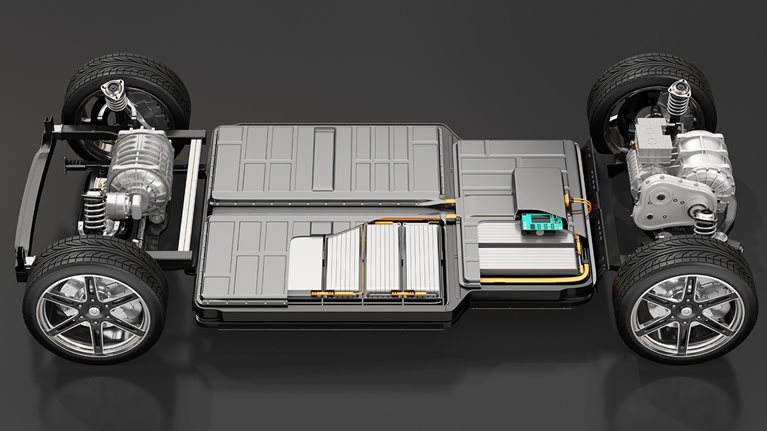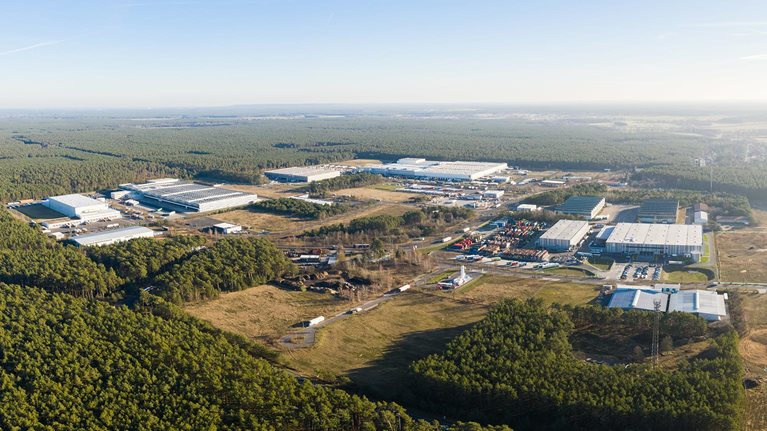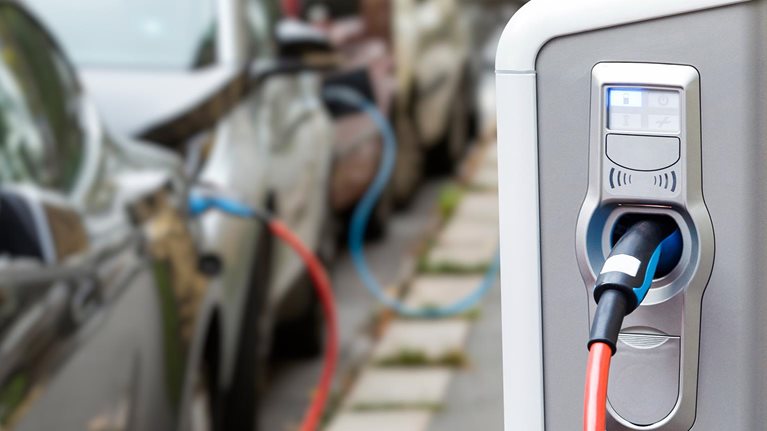A few short years ago, the main questions customers had when purchasing electric vehicles (EVs) were about price and driving range.1 Today, the number-one concern is different: adequate charging infrastructure. To keep pace with the rapidly growing interest in electric vehicles, vast networks of publicly accessible chargers will need to be built and put into operation in short order.2 A failure to do so could stymie EV growth and slow progress on decarbonizing road transport.
To learn more about the future of EV charging infrastructure, McKinsey’s Tony Hansen and Florian Nägele spoke with Frank Mühlon, president of the e-mobility division of ABB, and Giovanni Palazzo, president and CEO of Electrify America.
McKinsey: What are the biggest priorities in radically expanding electric-vehicle (EV) charging infrastructure and meeting or surpassing targets?
Frank Mühlon: If we are to meet the target of 290 million charging points by 2040, we’ll need $500 billion in public–private investment.3 These investments will likely be focused on high-impact segments—those that travel the most and carry large numbers of passengers or objects, such as commercial vehicles and public transport, as well as those that operate in highly dense environments.
Another priority is sustainability. To achieve global targets for emissions reductions as set out in the Paris Agreement, we need clear global standards for EVs, as well as credible solutions to abate emissions across the whole industry. Again, this can’t be achieved in silos but requires public–private joint efforts to create a sustainable EV market.
Overcoming obstacles to expanding EV infrastructure will involve offering financial incentives and regulatory support to drive the transition from internal combustion engine (ICE) vehicles to EVs, including by favoring efficiencies through shared and autonomous EV rides.
Giovanni Palazzo: Real-estate access, local-government and regulatory support, and talent acquisition are crucial as the market grows and matures.
Public charging has a significant real-estate component. Charging should be conveniently located both on major interstates and in dense urban areas. Real estate also relates to power availability, especially for fast charging. A location could be great from a utilization perspective, but if there is no electrical-grid capacity, installation could be challenging regardless of the solutions and technology leveraged.
The second hurdle is policy support at the local and utility levels. For example, the state of California—the largest electric-vehicle market in the United States—has already suggested best practices to expedite permits for the installation of EV charging stations, potentially accelerating EV growth.4 Continued updates to local permitting, as well as reassessments of utility demand, will be important in paving the way for EV infrastructure.
The final obstacle is talent. We have great people working at Electrify America—and, indeed, across EV-charging infrastructure. As the market grows, however, it will require additional talent that is determined to solve complex technological, operational, and consumer-acceptance challenges.
McKinsey: How do dynamics differ in the public-charging sector across the European Union (the Nordic countries and Central, Eastern, Southern, and Western Europe) and the United States?
Frank Mühlon: The biggest difference in the charging landscapes of the US and the EU is the role of utilities. In most European countries, utilities have been engaged in deploying charging infrastructure for many years, with many more utility-owned, large public-charger networks. Meanwhile, with US utilities, the dominant charging companies are privately owned. Utilities are predominantly owned by investors, with more than 3,000 companies operating as regulated monopolies across 50 states with 50 different regulatory bodies. As such, it can be a long and complicated process to gain approval to invest in capital-intensive programs such as EV infrastructure, particularly on a regional or national scale.
While at present the United States trails the European Union in prevalence of charging infrastructure, its investor-owned model means the pressure is higher to achieve profitability faster. This push for faster profitability has created a culture among US charging companies of strong operational cost control and more experimentation with different business models.

Voices on Infrastructure: Scaling EV infrastructure to meet net-zero targets
McKinsey: What are your mid- and long-term views on how the charging-infrastructure sector is changing (for example, the role of software and services, new business models, consolidation, and competition)?
Frank Mühlon: The future of the market is full of opportunity for multiple disciplines. We will see the development of next-generation vehicles and supporting components, as well as an evolution of the collaborations among charging-technology providers, OEMs, operators, utilities, and players in renewable energy. Companies are already making bold moves, diversifying their portfolios to participate in the operation of charging stations. For example, IONITY—a joint venture of BMW Group, Daimler AG, Ford Motor Company, Hyundai, and the Volkswagen Group with Audi and Porsche—operates a network of approximately 400 fast-charging stations across 24 European countries.
New software solutions are also emerging that are shaping the future of the sector. One cloud-based digital solution aims to optimize the real-time fleet management of EVs and to speed up the electrification of transport fleets by helping operators maintain 100 percent business continuity as they make the transition to being fully electric.
Giovanni Palazzo: We expect more developments in the customer experience and the market as charging infrastructure continues to mature.
Studies have found that limited public charging and long charging times are now among the top barriers to further EV adoption. We’ve made progress, though: ten years ago, drivers of electric vehicles could usually charge only at home; then came public Level 2 chargers; and now we are starting to see widespread availability of fast-charging options. But there’s still a lot more growth needed.
More dynamic systems will need to be developed in the medium to long term. Today, time-of-use tariffs for EV charging are emerging from utilities. As renewables on the grid increase, energy supply could fluctuate over the course of a day or a year. A more dynamic system could create value, requiring advances in smart energy and grid services and real-time pricing.
In the near term, I could see public fast-charging infrastructure remaining a fragmented market. Over time, though, as with many capital-intensive industries, companies will consolidate regionally or nationally. So in the medium to long term, you will see a structural change in fast charging.
McKinsey: What are the most exciting technology advancements that we will see in EV-charging infrastructure?
Giovanni Palazzo: Ultimately, charging will ideally become convenient, fast, and seamless. Of course, what might become routine to customers will require hard work from technology experts and a commitment to operational excellence.
When I say “convenient,” it’s not just a matter of location; it also means being available and online, which will require predictive maintenance enabled by data science and real-time diagnostics.
Second, I think the five-to-ten-minute charge will be game changing. With 800-volt architectures becoming more common in EVs, five-minute charge-ups may be a reality soon.
Finally, a seamless customer experience is about building on technologies like plug-and-charge solutions and ensuring that electric-vehicle charging is keeping pace as other mobility trends, such as autonomous vehicles, come to market.
Frank Mühlon: The development of vehicle to grid with bidirectional charging is really exciting. The chargers can smooth out each day’s uneven generation of renewable electricity, such as through solar and wind, and enable EV drivers to transfer surplus power back to the grid—with the potential to earn money back.
Convenience is key to EV adoption, and plug-and-charge solutions represent the next significant evolution in fueling our vehicles. Plug-and-charge enables drivers to simply drive to the charger, plug in the connector, and start charging automatically, removing the need for credit cards or payments via a smartphone.
McKinsey: What are the most important or most impactful partnerships that you see or hope to see for accelerating the rollout of charging infrastructure?
Giovanni Palazzo: There are several key collaborations, such as coordination with utilities companies and technical integration with vehicle manufacturers. Strong collaboration with automotive companies will be necessary to offer a seamless customer experience, such as plug-and-charge solutions—the ability to plug in the vehicle and walk away with no credit-card or app interaction required in that moment.
Furthermore, government commitment at all levels is crucial to accelerating the rollout of charging infrastructure as the market continues to mature. Supporting access to funding, whether at the national level or through locally targeted incentives, could have a significant impact. Government can also reexamine complex permitting and site-development processes.
Comments and opinions expressed by interviewees are their own and do not represent or reflect the opinions, policies, or positions of McKinsey & Company or have its endorsement.


